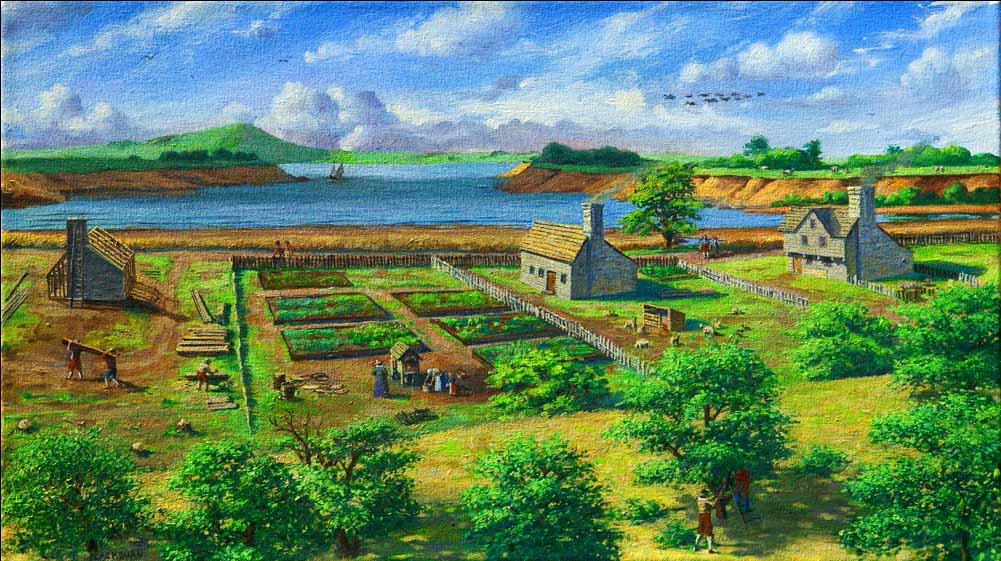
A deep dive into the early letters of Roger Williams and the deeds signed by Narragansett Chief Canonicus, Pokanoket Massasoit Ousamequin, and Sachem Alexander (Wamsutta) reveal a story that differs from the usual story about the founding of the Town of Providence. Click here for a six-minute video by Sowams Heritage Area Project Coordinator David Weed recorded on August 10, 2024. Click here for a five-minute video of Mashapaug Chief Two Hawks talking about the same story. Click here for a history of Mossashuck.
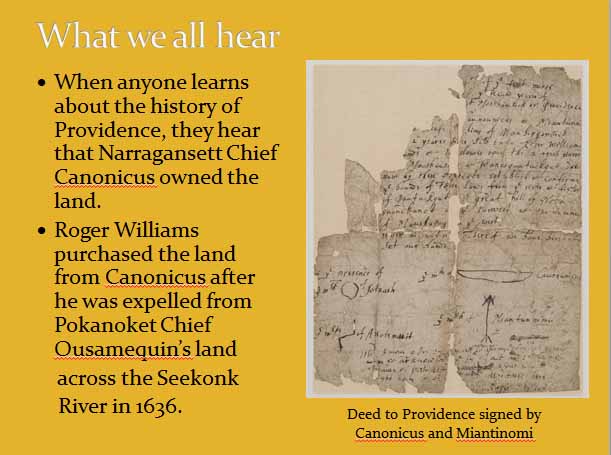
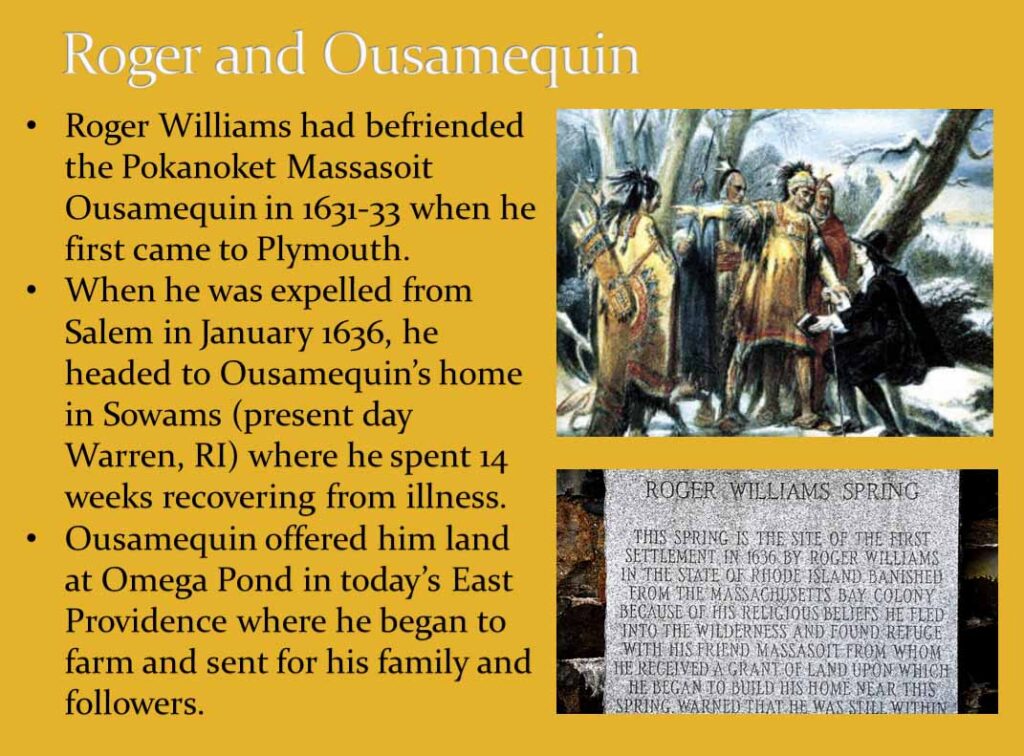
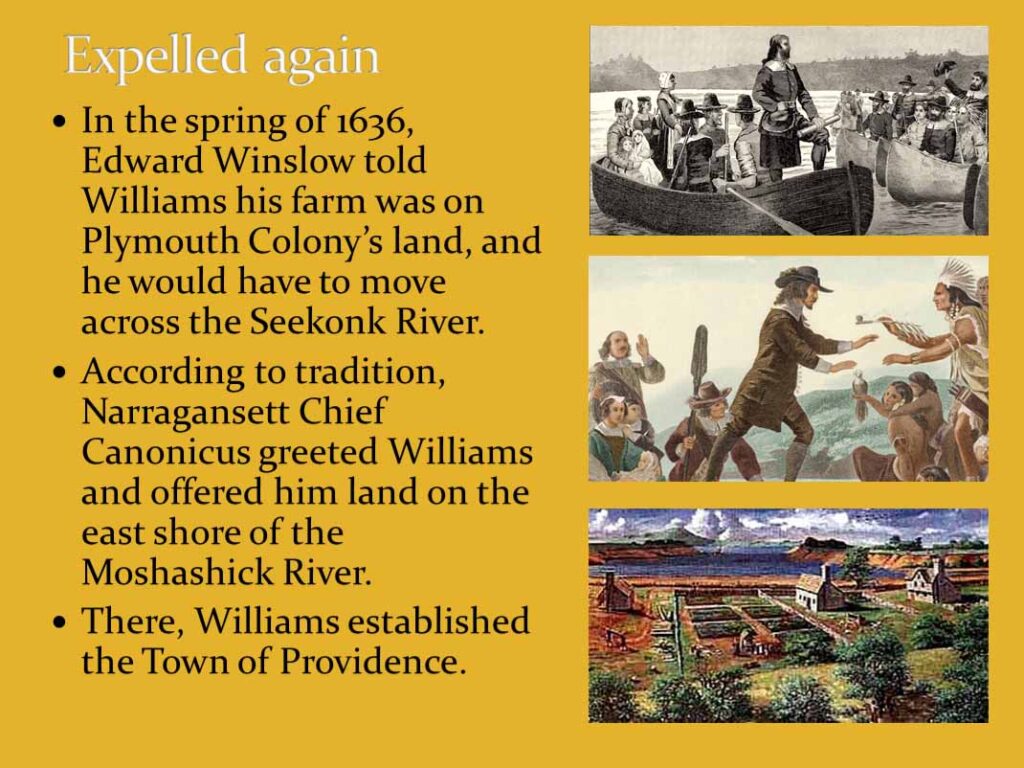
The story of Roger Williams acquiring the land for his town of Providence usually attributes the ownership of the land to the Narragansett Chief Canoonicus.

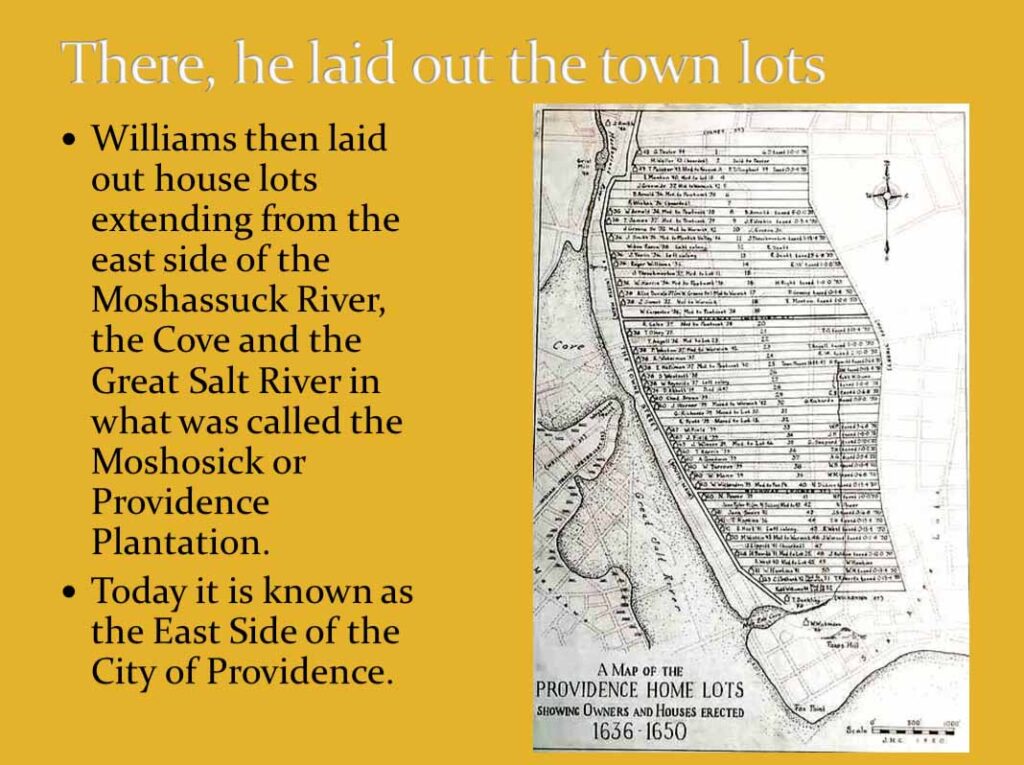
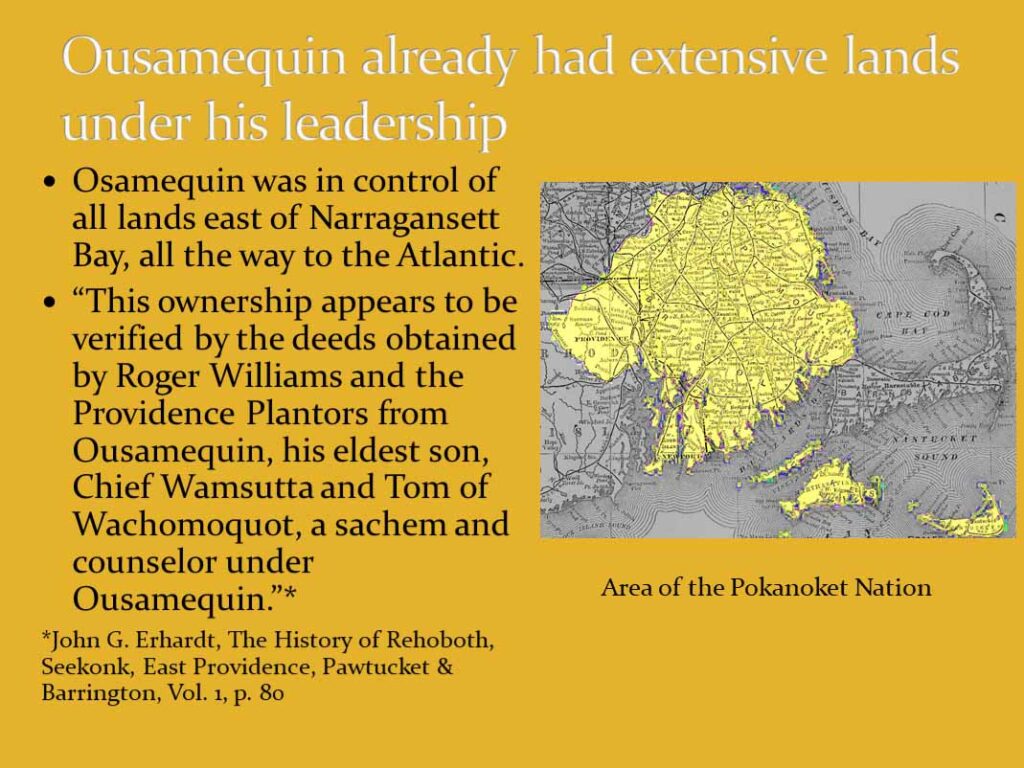
However, opinions vary as to the validity of Canonicus’ claim to the land that Williams occupied, and documents at the time seem to support an alternative claim.
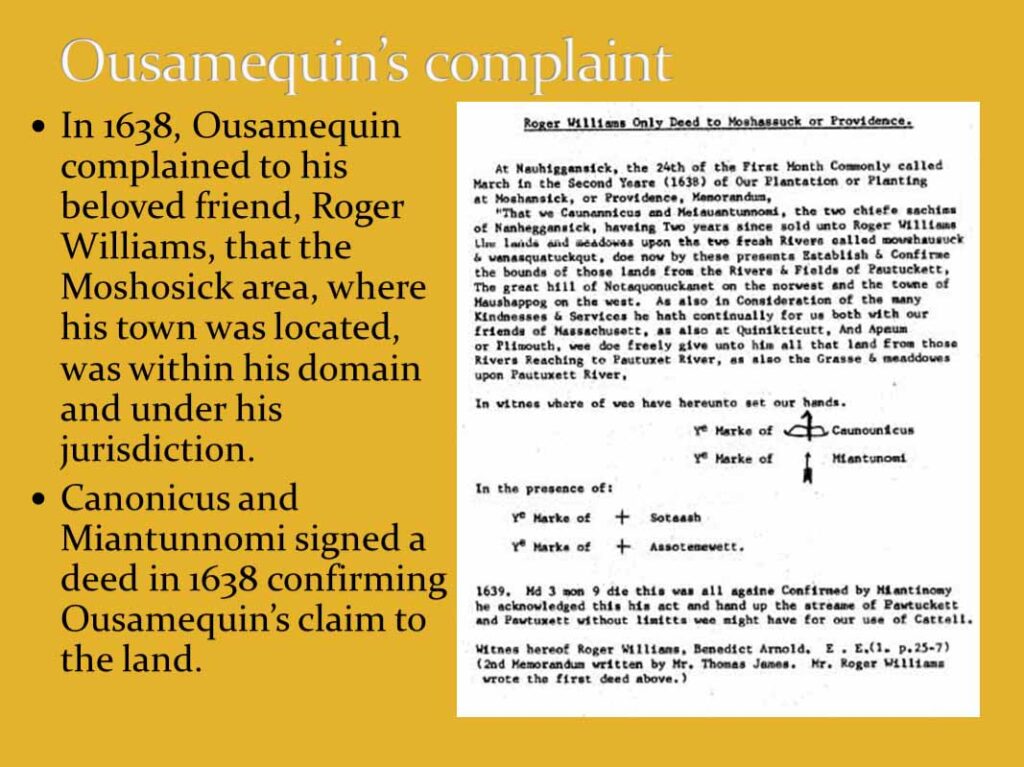
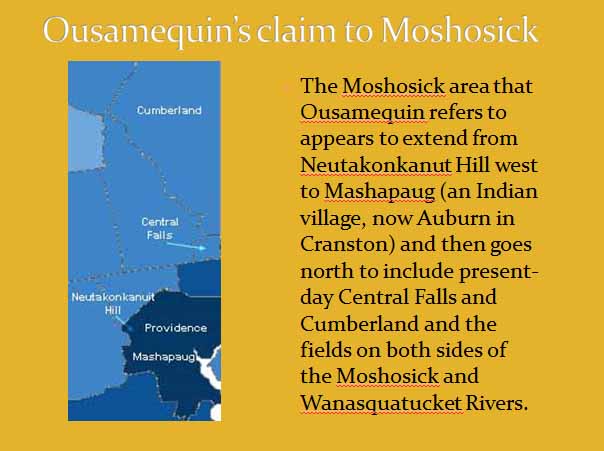
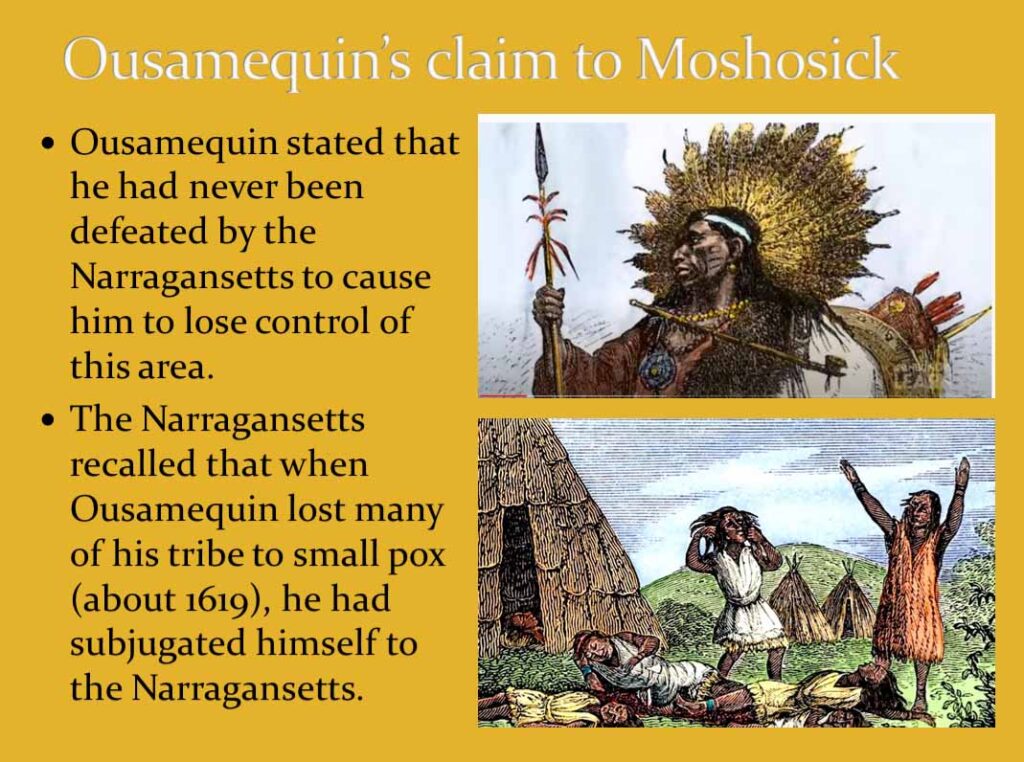
As early as 1638, two years after Williams arrived, Pokanoket Massasoit Ousamequin complained to Williams that the Moshosick area where he settled had been under his control except for two years between 1619 and 1621 when an epidemic had diminished his power, and he was forced to pay tribute to Canonicus.
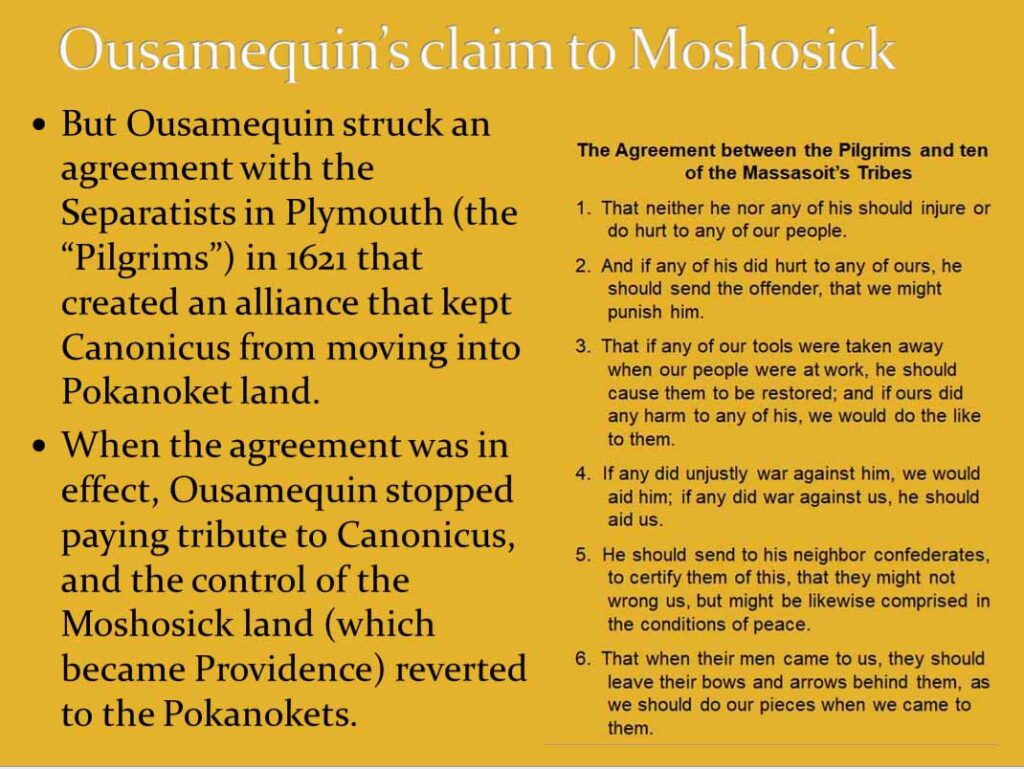


However, after Ousamequin struck a mutual protection agreement with the English Separatists in Plymouth, he resumed control of a large sector of land that included the place where Williams located his town along the Moshasick River.
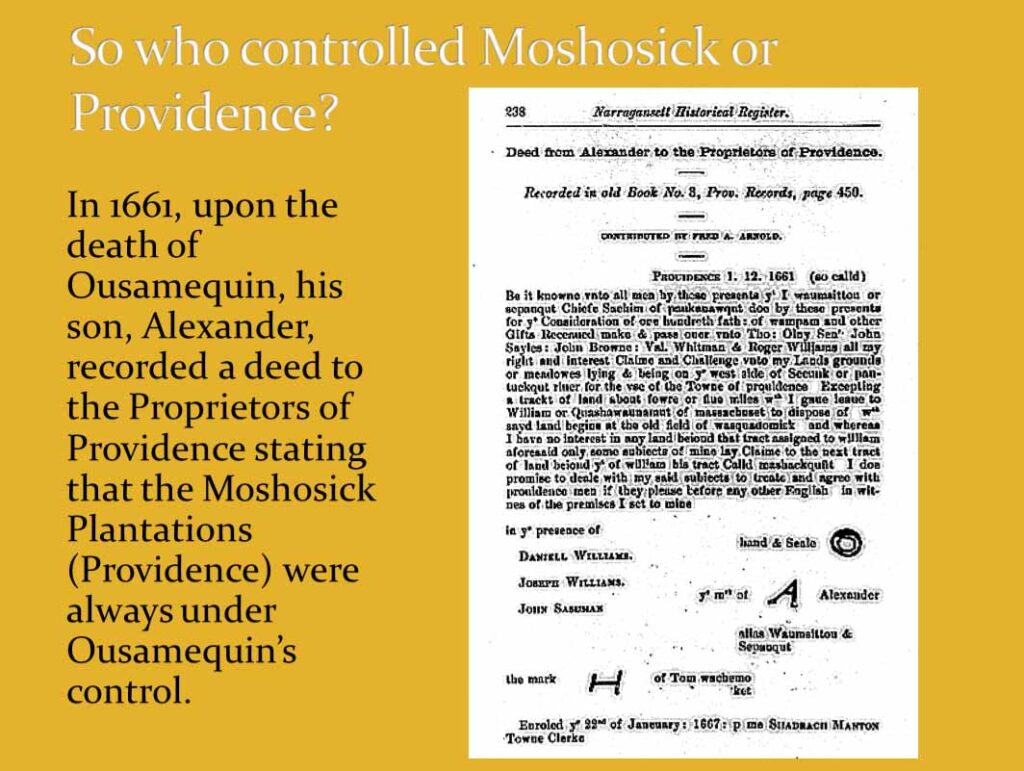
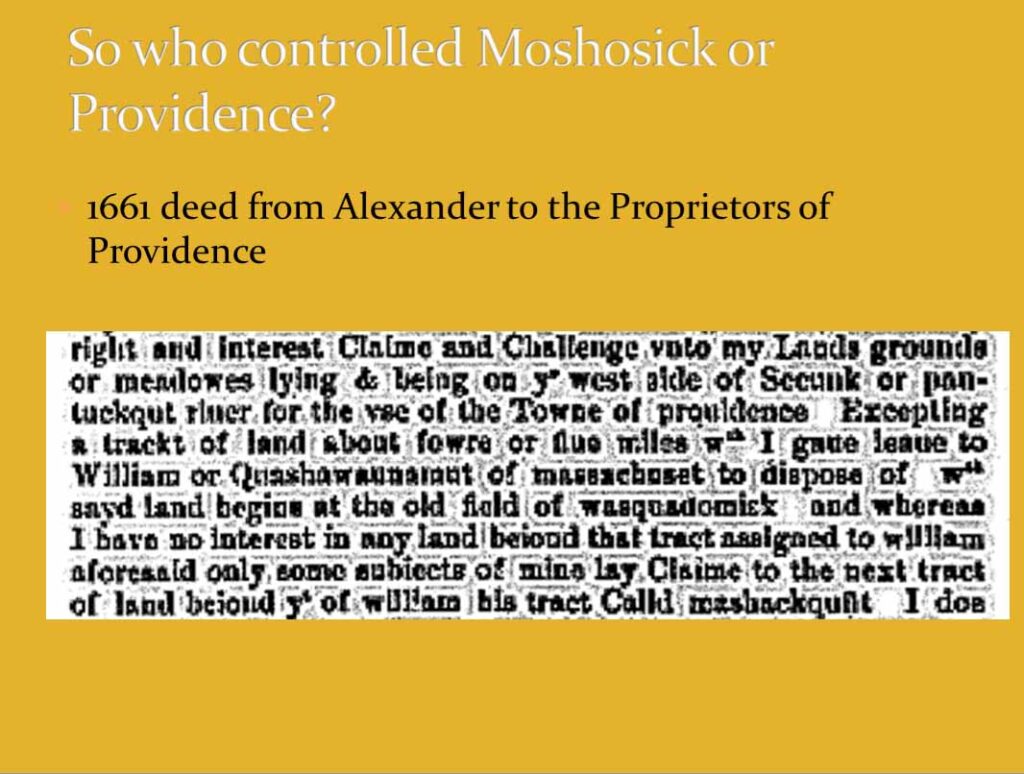

Even following Ousamequin’s death in 1661, his son, Wamsutta, signed a deed to the Proprietors of Providence stating his claim to the Providence land. Ousamequin never gave up his rights to the lands where Williams settled.
